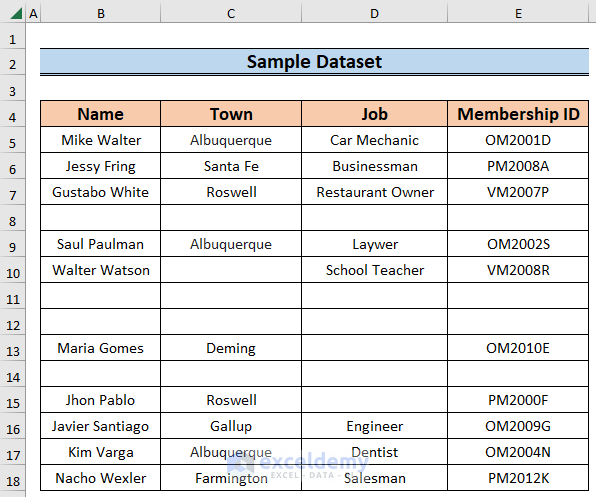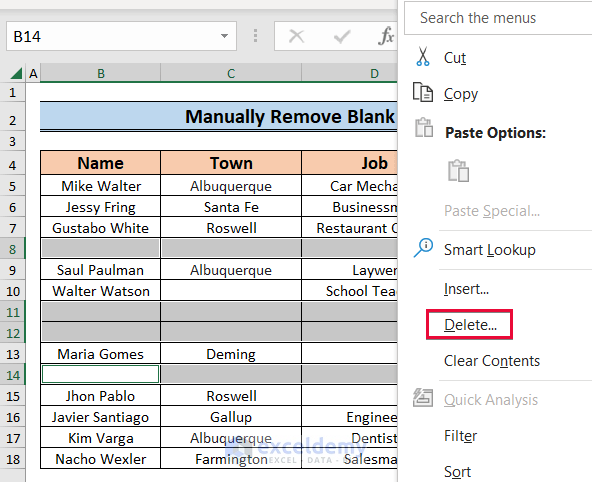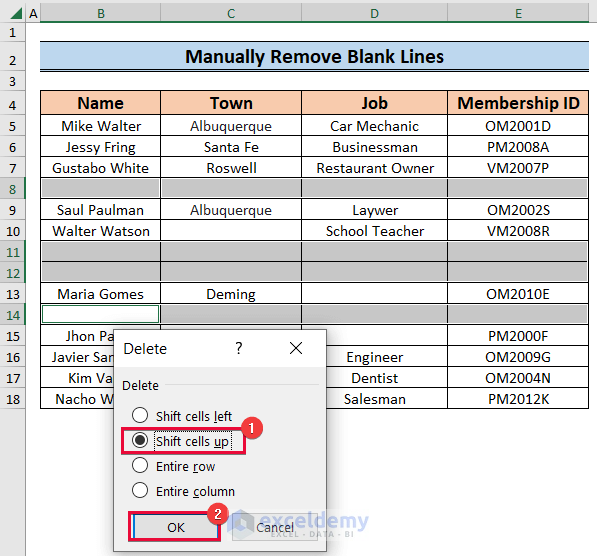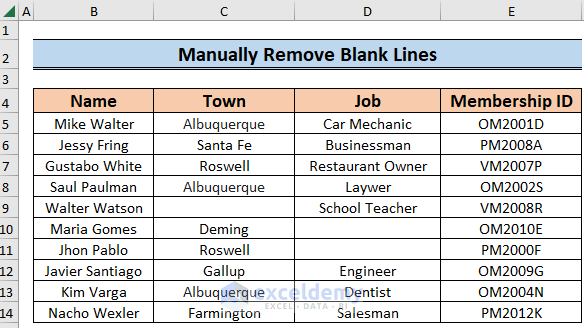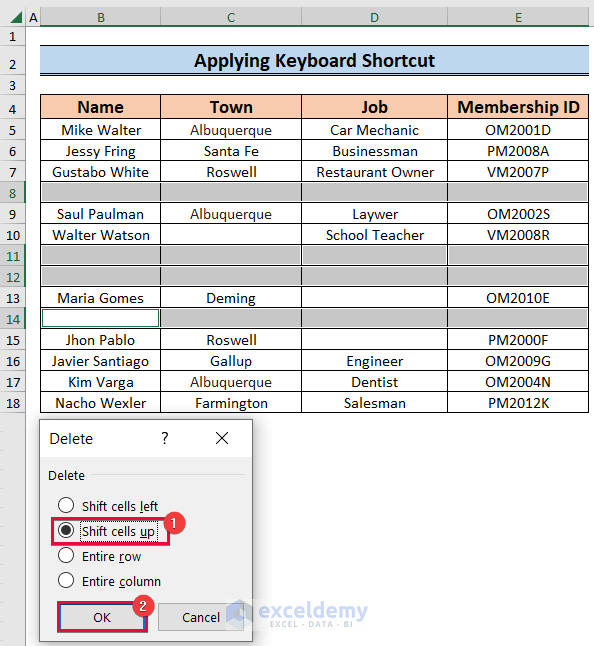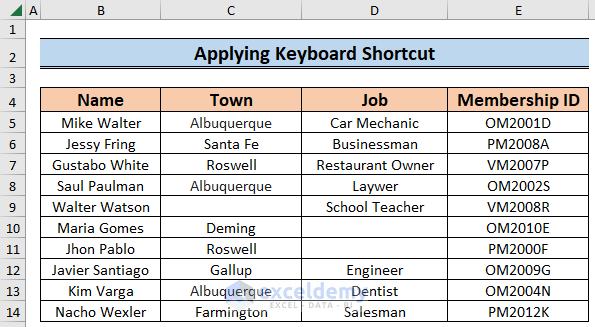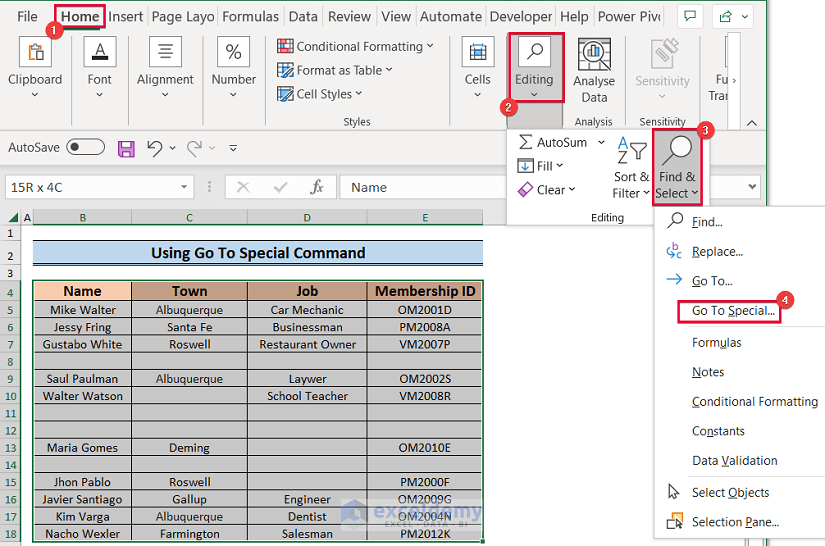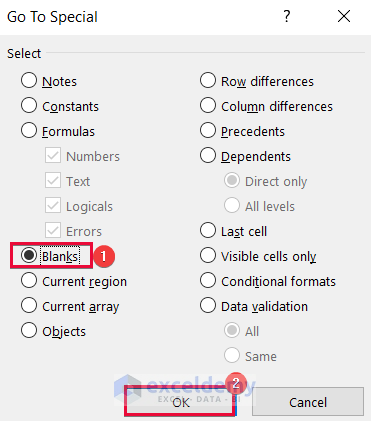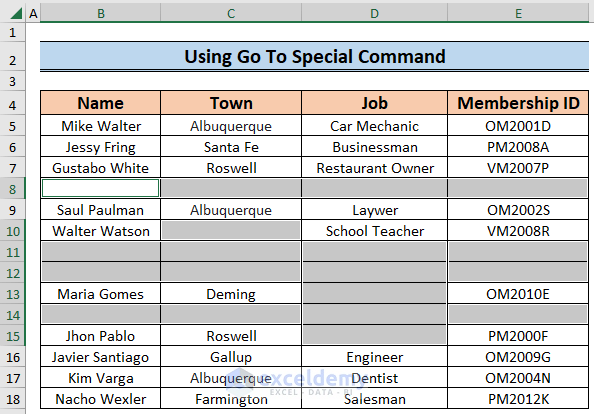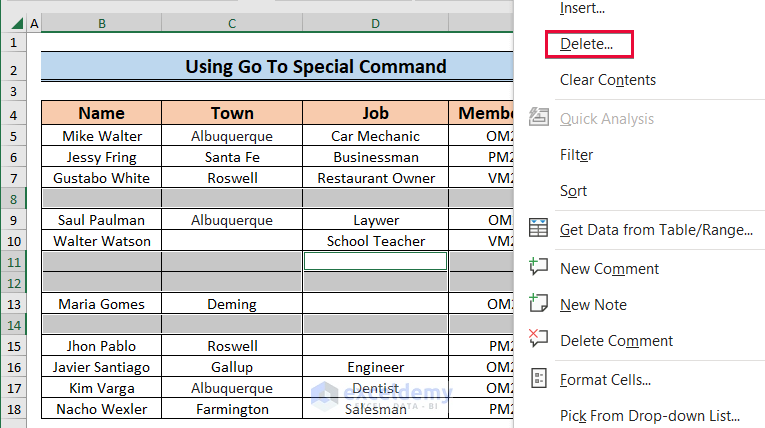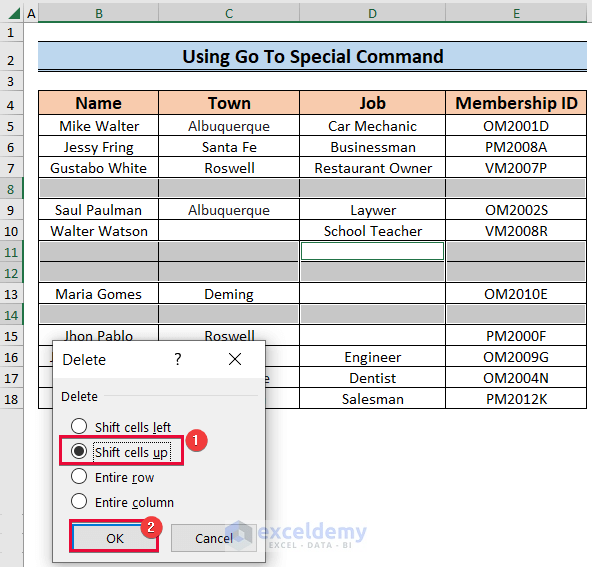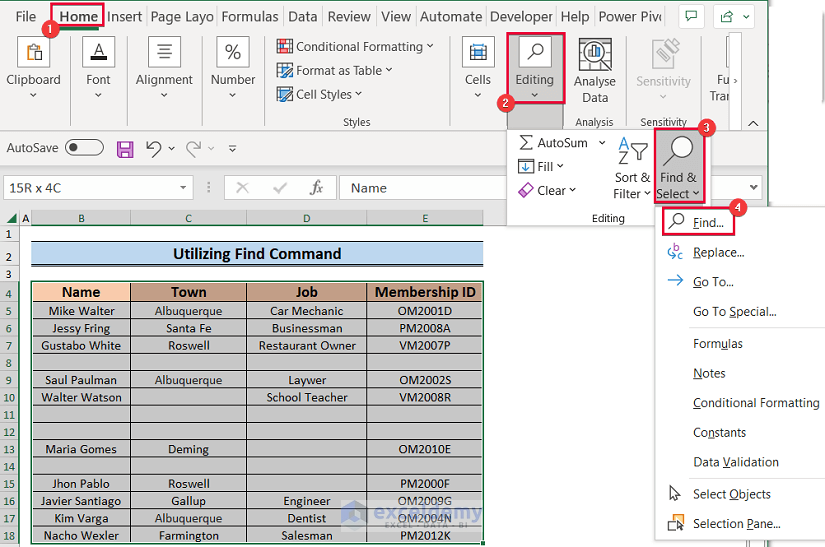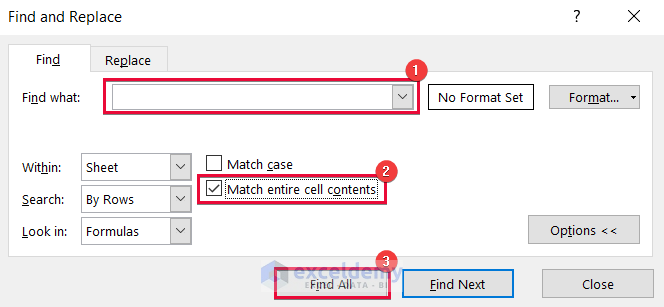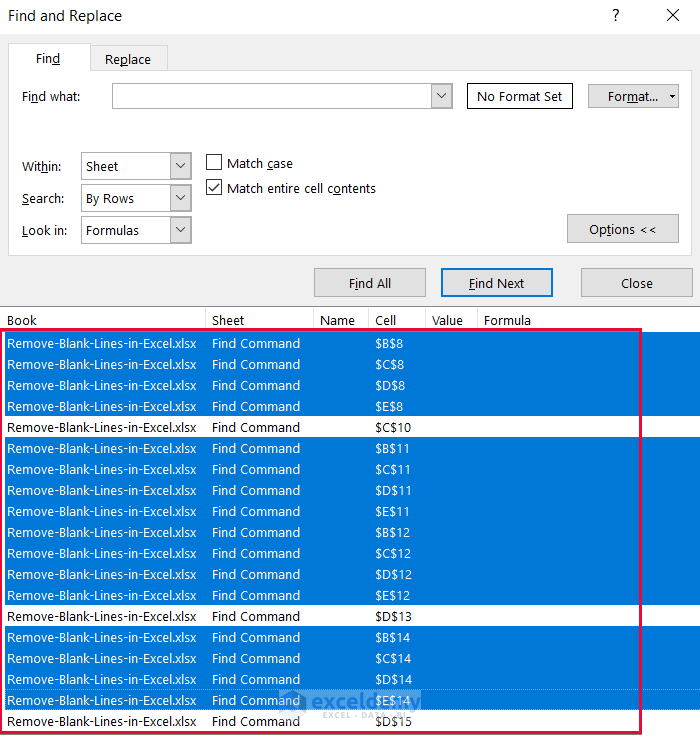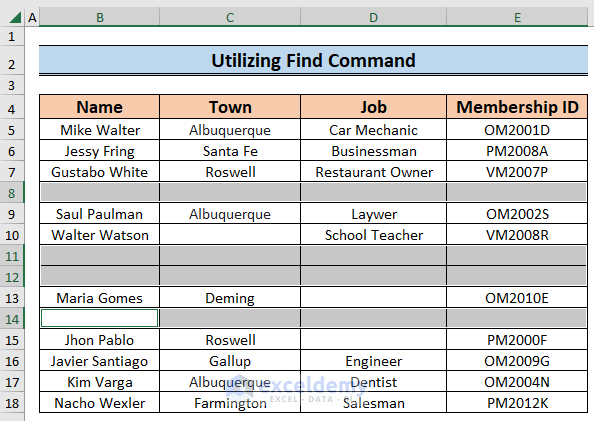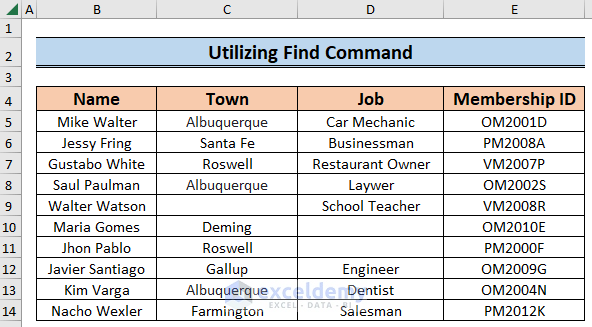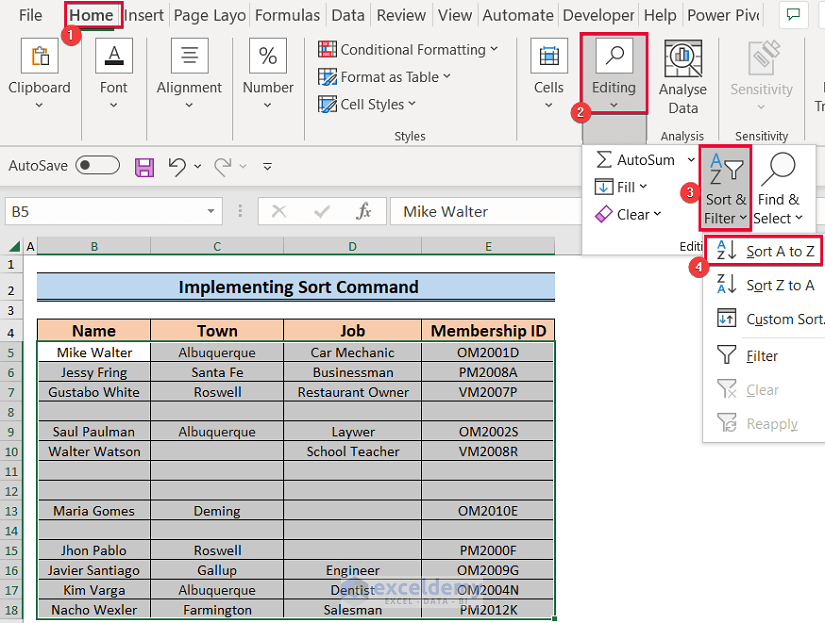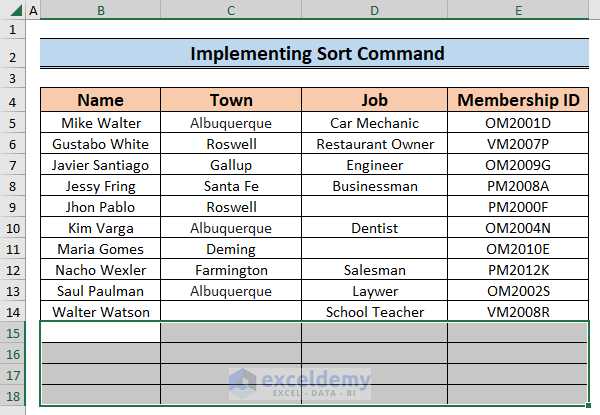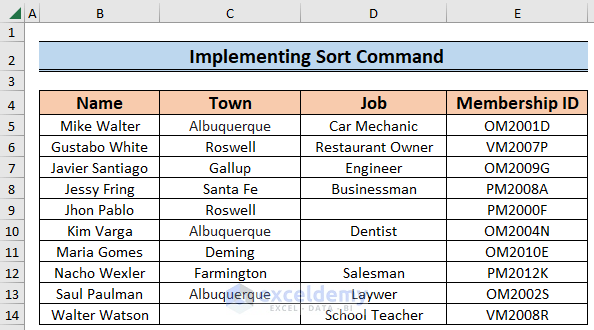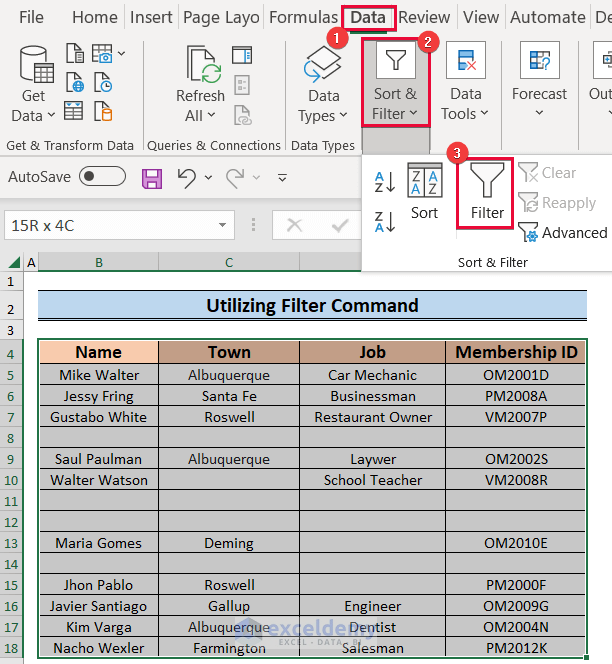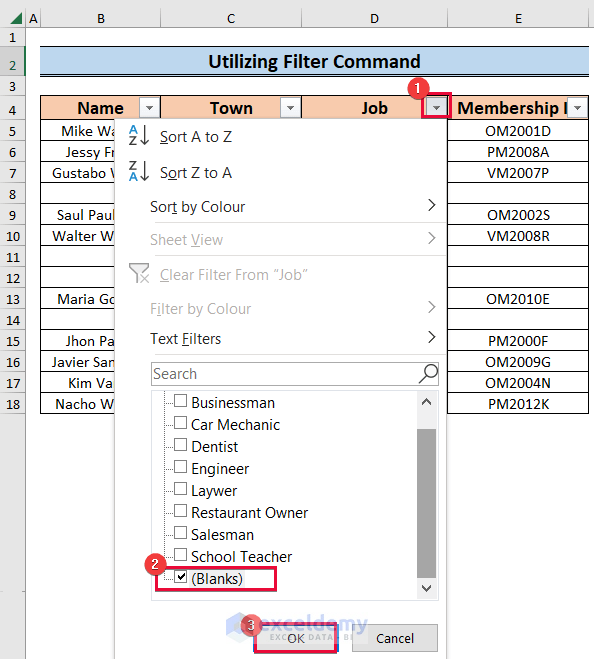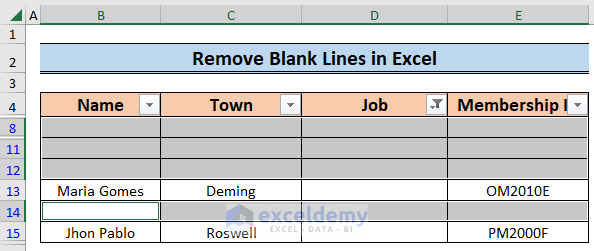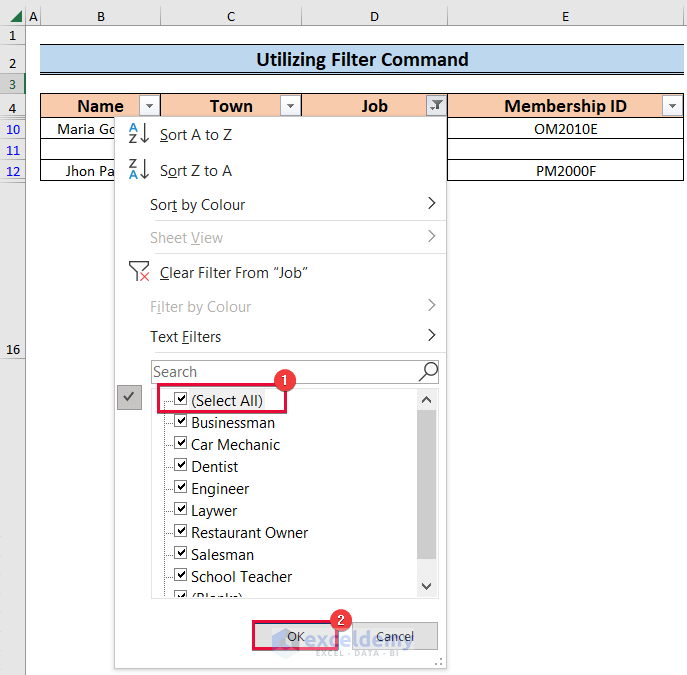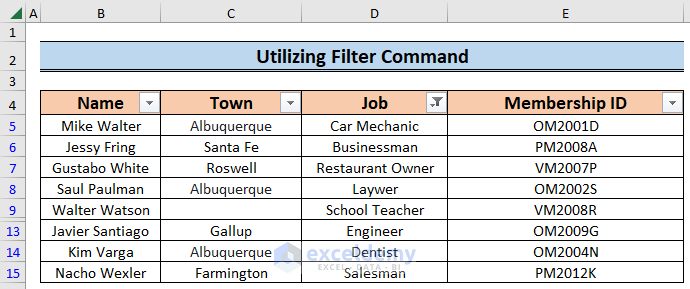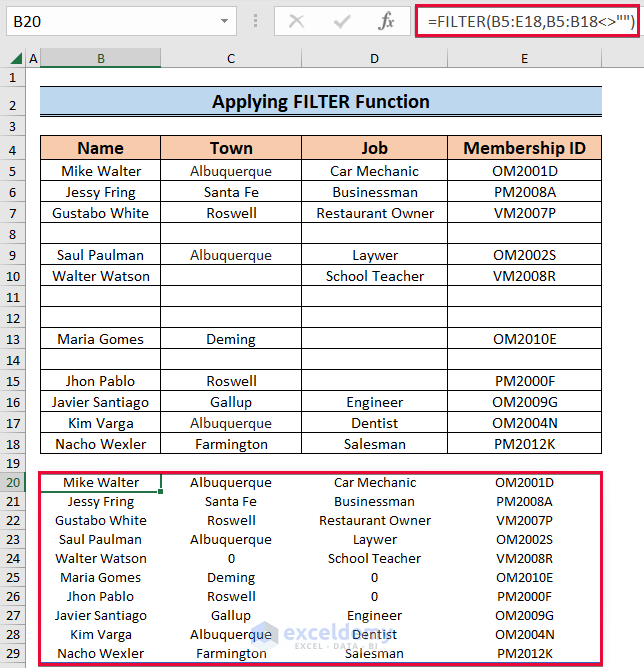Dataset Overview
In our dataset we have data of different members of a club. Our dataset contains several blank lines. We will delete these empty rows by using 7 different methods.
Method 1 – Manually Remove Blank Lines
This method is straightforward but best suited for small datasets.
Steps
- Select the blank lines by holding down the Ctrl key.
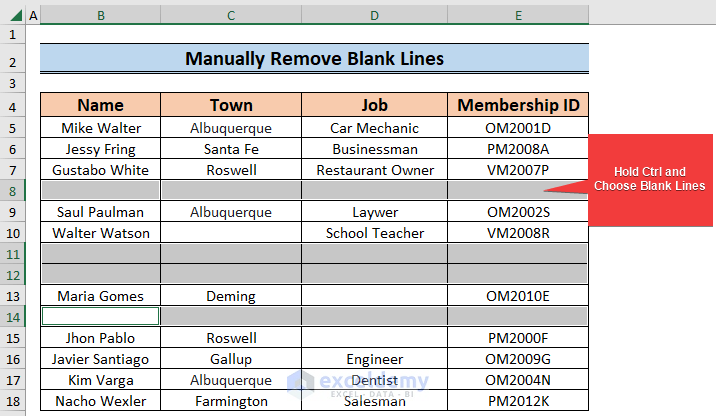
- Right-click and choose Delete from the available options.
- In the Delete prompt, select Shift cells up and click OK.
- Your dataset will now be free of blank lines.
Read More: How to Delete Blank Cells and Shift Data Up in Excel
Method 2 – Applying Keyboard Shortcut
Although manual, this method is faster than the previous one.
Steps
- Select the blank lines.
- Press Ctrl + Minus (–).
- Choose Shift cells up from the Delete prompt and click OK.
- Excel will remove the blank lines.
Method 3 – Using Go To Special Command
Steps
- Select the cell range (e.g., B4:E18).
- Go to Home > Editing > Find & Select > Go To Special.
- In the prompt, choose Blanks and click OK.
- All blank cells within the dataset will be highlighted.
- Right-click on the blank rows or lines and choose Delete.
- Select Shift cells up and click OK.
- Blank lines will be deleted.
Read More: How to Remove Blank Cells from a Range in Excel
Method 4 – Utilizing Find Command
Steps
- Select the cell range (e.g., B4:E18).
- Go to Home > Editing > Find & Select > Find.
- In the prompt, leave the Find what box blank.
- Check the Match entire cell contents box.
- Click Find All.
- A list of all blank cells will appear.
- Choose the blank lines from the list and click Close.
- Blank lines will be highlighted.
- Remove them as in previous methods.
Method 5 – Implementing Sort Command
Steps
- Select the cell range B4:E18.
- Go to Home >> Editing >> Sort & Filter >> Sort A to Z.
- This will sort the dataset, separating blank lines from non-blank ones.
- Finally, delete the blank lines as described in the previous method to obtain a dataset without blank lines.
Method 6 – Utilizing Filter Command
Steps
- Choose the B4:E18 cell range.
- Go to Data >> Sort & Filter >> Filter.
- All column headers will now have a filter handle.
- Click any filter handle and select the (Blanks) box.
- Press OK to filter out all blank cells.
- Delete the blank lines following the previous method.
- Click the filter handle again, mark the Select All box, and click OK.
- Your dataset will be free of blank lines.
Read More: How to Remove Blank Cells in Excel
Method 7 – Applying FILTER Function
Steps
- Click on cell B20 and insert:
=FILTER(B5:E18,B5:B18<>"")- Press Enter.
- You’ll get a dataset without blank lines.
Download Practice Workbook
You can download the practice workbook from here:
Related Articles
- How to Delete Blank Cells and Shift Data Left in Excel
- How to Ignore Blank Cells in Range in Excel
- How to Leave Cell Blank If There Is No Data in Excel
- How to Remove Unused Cells in Excel
<< Go Back to Blank Cells | Excel Cells | Learn Excel
Get FREE Advanced Excel Exercises with Solutions!